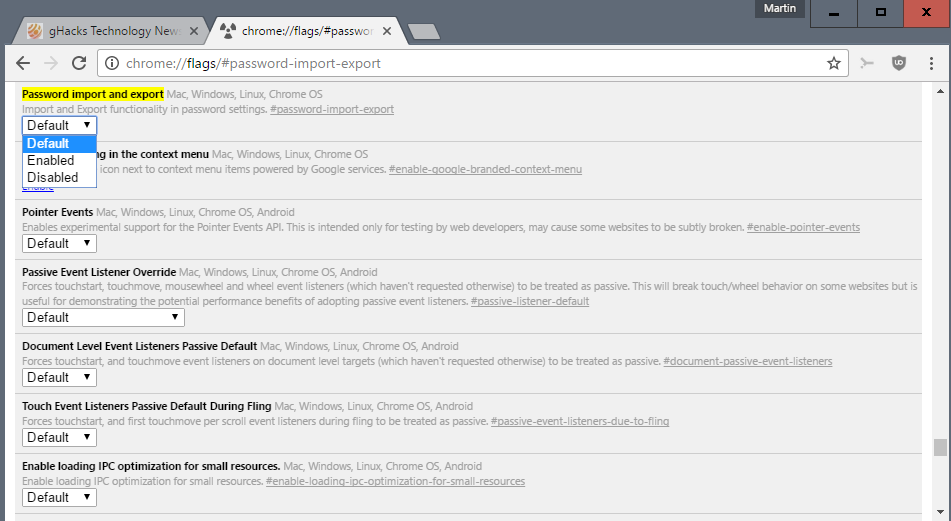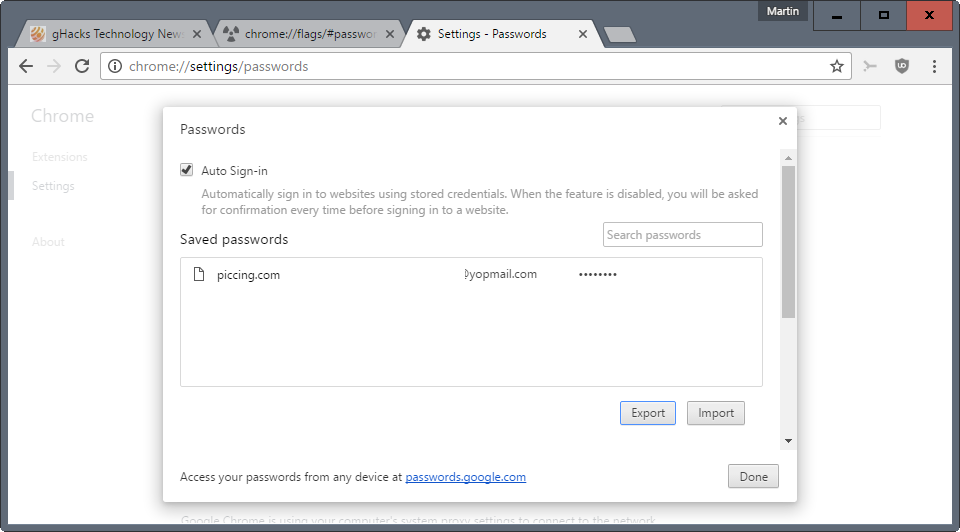Chrome: import, export passwords feature
Google's Chrome web browser ships with an experimental feature that lets you import or export passwords stored in the browser easily.
Chrome, just like any other modern browser, ships with options to save passwords and other data while you are using it.
This is a comfortable option, as you don't have to enter the data manually anymore once saved by the browser.
Sometimes though, you may want access to the data outside of Chrome. Maybe because you made the decision to switch from using Chrome's built-in password functionality to a third-party password manager. Or, because you want to switch to another browser, move the passwords to a new computer without using Chrome sync, or simply analyze the quality of the passwords.
Chrome: import, export passwords

Chrome for all desktop operating systems includes an experimental flag to enable the importing and exporting of passwords. Experimental flags may stay experimental, may be integrated directly in the browser, or removed from Chrome again at any time.
To get started, load chrome://flags/#password-import-export in the Chrome address bar and hit the Enter-key on your keyboard. This takes you to the right parameter on the flags page.
Switch the preference to enabled, and click on the restart button that spawns when you do afterwards. Chrome needs to be restarted whenever you change flags in the browser before the new or changed features become available.
The new import and export functionality is added to the built-in password manager. Either load the passwords manager directly using chrome://settings/passwords, or select Menu > Settings > Advanced Settings > Manage Passwords under Passwords and Forms.

To save all passwords, select the export button. You are prompted to enter the user account password at this point before the save prompt is displayed.
Chrome saves all passwords as a plain text csv file. Note: this file is not protected by any means. Anyone with access to the computer could open it and access all sites listed in the file.
Import works nearly identical, only that you don't have to enter an account password to import passwords into Chrome.
You may import the password file into any password manager that supports generic csv imports. My favorite password manager KeePass had no problems importing the Chrome password file for instance.
Closing Words
The password import and export functionality has been part of Chrome's experimental flags offering since mid 2016 at the very least. The option may come in handy in a few scenarios mentioned in the introductory paragraphs already. No word though on the future of the setting. (via Chrome Story)